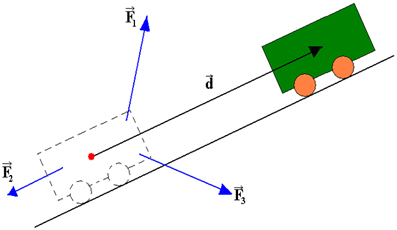Many say that physics is a difficult discipline, but we find many physical applications in our daily lives. If we look around us, we will see its countless applications – a simple walk involves physics. Therefore, in order for you to understand it, it is necessary to observe the physical phenomena involved in your daily life.
A basic example that we can mention is the washing machine. You may have already noticed the steps taken by the machine when it is running. First it is filled with water, then the washing process begins, then there is rinsing and centrifugation. The most interesting part is when the machine starts to spin very quickly. Right then, when she stops, her clothes are practically dry.
But, at the time of centrifugation, what happens to the water and clothes?
In a simple observation we can see that all the clothes are arranged in a cylinder with holes in its side. At the moment of centrifugation, the cylinder starts to rotate at high speed, causing the water to come out of the holes in the side of the cylinder. At this exact moment, the clothes are arranged on the side of the cylinder and a contact force (centripetal force) makes the clothes keep in a circular motion.
The same does not happen with the water in clothes, as it does not meet resistance and exits the tangent of the cylinder in a straight line, that is, all the water exits through the lateral holes.
Several laboratories use centrifuge equipment to separate some mixtures. The name “centrifugal” is a derivation of centrifugal force. So, can we say that centrifugal force is the same as centripetal force?
According to Newton's Second Law, the effect of a force is to produce acceleration, which means velocity variation. As we know, velocity is a vector quantity, so it has magnitude, direction and direction.
Do not stop now... There's more after the advertising ;)
So let's see: Suppose you are inside a car that is moving. Now imagine that you are sitting in a static chair. In both examples we can say that you are feeling the same forces at work.
Now imagine if the car was moving and at high speed it took a turn. In this case, you would be feeling another force acting, that is, you would feel the centripetal force, force that makes you follow the movement of the car. Thus, we can conclude that the centripetal force felt by you is applied by the side of the car.
Adopting the car as a reference at rest and the rest in motion, you will feel the sensation that another force is acting on you, pushing you to the side of the car. this force is the force centrifuge – which acts, in this case, from the center to the outside of the curve.
To an observer standing outside the car, centrifugal force does not exist. He sees the car accelerating to the center of the curve due to the force centripetal (caused by friction between the tires and the track); and see you, inside, turning because of the force of contact with the side of the car. For this reason, centrifugal force is called fictitious force.
Therefore, it is concluded that the centripetal and centrifugal forces are completely different. Centrifugal force is only valid in a frame of reference linked to the rotating object.
By Domitiano Marques
Graduated in Physics
Would you like to reference this text in a school or academic work? Look:
SILVA, Domitiano Correa Marques da. "Centrifugal force"; Brazil School. Available in: https://brasilescola.uol.com.br/fisica/forca-centrifuga.htm. Accessed on June 27, 2021.


